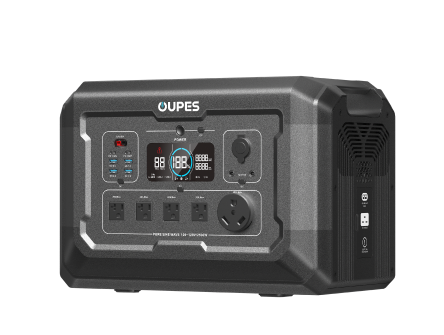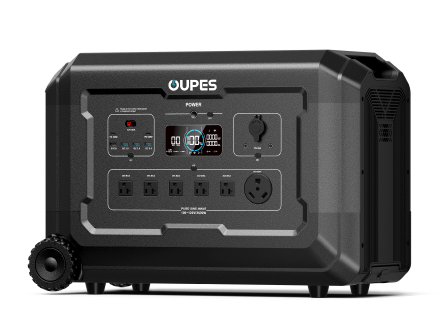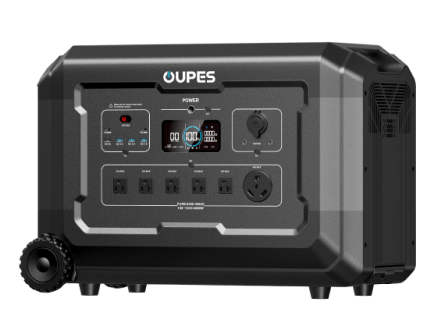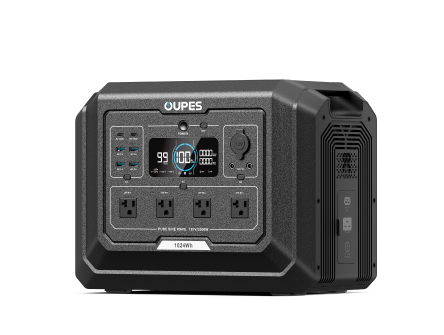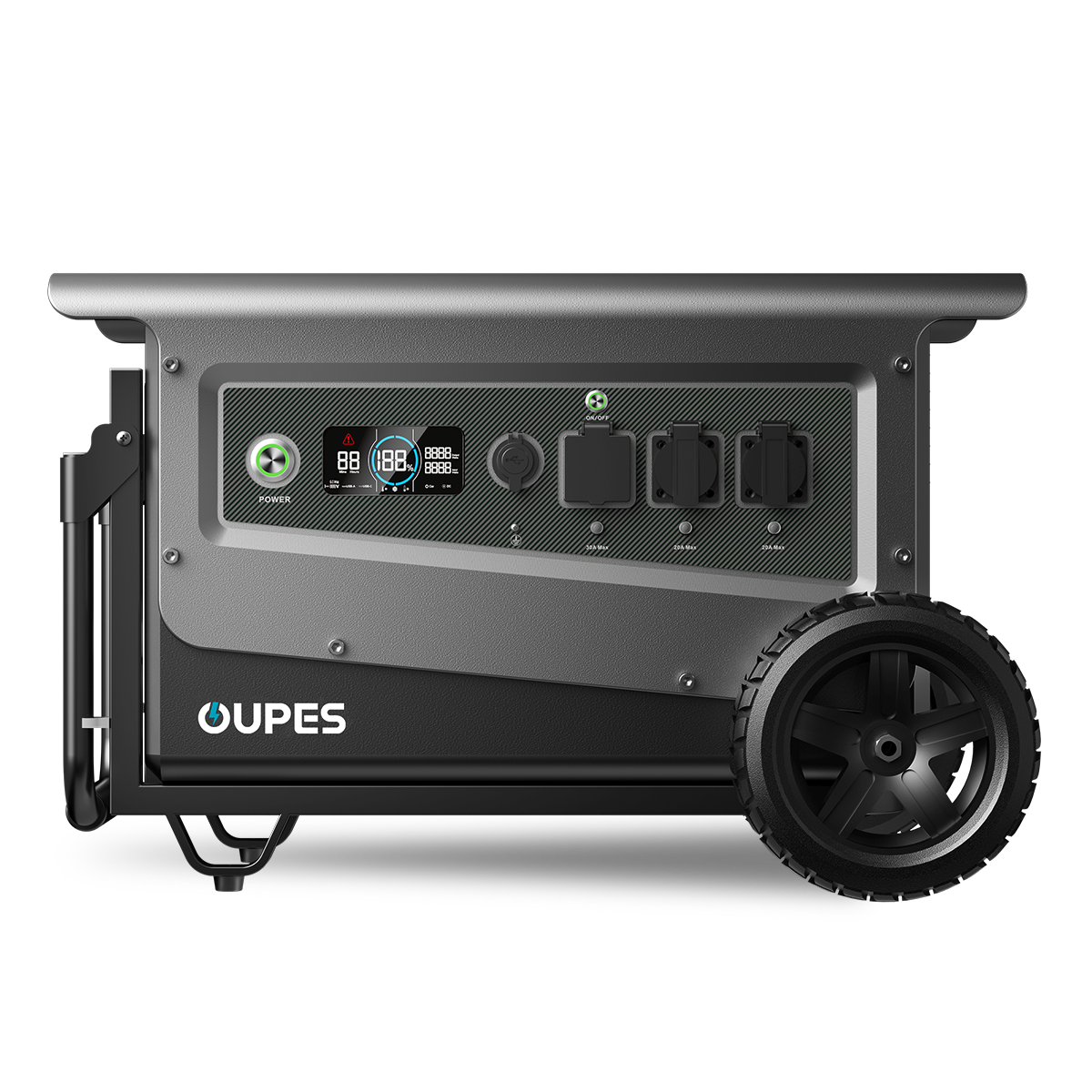
Portable power stations have become a game-changer for those who need reliable, off-grid electricity. Whether you're camping in the wilderness, preparing for an emergency, or using it as a backup for home appliances, these devices offer incredible flexibility and convenience. However, one of the most common questions surrounding portable power stations is how long they actually last. In this article, we will explore the factors that influence the lifespan of a portable power station, including battery life, usage patterns, maintenance, and much more. If you're considering investing in one of these devices, this guide will help you better understand what to expect in terms of longevity.
Understanding Battery Life and Its Impact on Longevity
At the core of every portable power station is a battery, usually either a lithium-ion or lithium iron phosphate (LiFePO4) battery. These types of batteries are known for their high energy density and long lifespan compared to older battery technologies. However, the longevity of the battery plays a critical role in how long your portable power station will last overall. Simply put, a portable power station can last for years, but its battery may degrade over time due to various factors.
One of the most significant factors affecting battery life is the number of charge cycles the battery undergoes. A charge cycle refers to a full discharge and recharge of the battery. Most high-quality portable power stations can withstand several hundred to a thousand charge cycles before their batteries start to show signs of degradation. After this point, the battery’s capacity may reduce, meaning it won't be able to hold as much power as it once did, shortening the runtime.
In general, lithium-ion batteries tend to last anywhere from 500 to 2,000 charge cycles, depending on the quality of the battery and how well it is maintained. For those who use their portable power stations frequently, this means they might start noticing reduced performance after a few years of use. However, regular maintenance, such as keeping the device in a cool, dry environment and avoiding deep discharges, can help extend the lifespan of the battery significantly. Proper usage and care of the battery can help you get the maximum lifespan out of your portable power station.
Usage Patterns and Their Effect on Longevity
The way you use your portable power station directly impacts its lifespan. Regular heavy usage can reduce its longevity, while infrequent, light usage can prolong it. It's important to understand that every time you charge or discharge your portable power station, the battery undergoes stress. This stress accumulates over time, and with frequent deep discharges (draining the battery to a very low percentage), the battery’s capacity can decrease more rapidly.
If you frequently use your portable power station for high-power devices such as refrigerators or power tools, the battery will naturally degrade faster due to the increased strain on the system. In contrast, if you're using it primarily for charging small electronics like phones or laptops, the battery is less likely to suffer from rapid degradation. It's important to know that batteries degrade slowly and consistently over time, and using the power station responsibly can help mitigate this process.
Additionally, high temperatures can accelerate battery wear. If you often use your portable power station in hot environments or leave it in direct sunlight, the heat will cause the battery’s components to deteriorate faster. On the other hand, charging and using the device in cooler temperatures helps protect the battery, allowing it to last longer. For those who plan to use their portable power station for long-term purposes, it's crucial to monitor usage patterns and avoid excessive heat to maximize the longevity of the device.
Maintenance Tips for Extending the Life of Your Portable Power Station
Just like any other piece of technology, a portable power station requires proper maintenance to ensure it lasts as long as possible. Thankfully, taking care of your power station doesn’t have to be difficult. Simple steps can go a long way in extending its life and maintaining its efficiency. Below are some maintenance tips that can help your portable power station last longer:
First and foremost, avoid letting the battery completely discharge regularly. It’s best to recharge the power station when it reaches about 20% to 30% of its total capacity. Deep discharges can strain the battery and reduce its overall lifespan. Similarly, avoid overcharging the battery. While most modern portable power stations have built-in protection mechanisms to prevent overcharging, it’s still a good idea to unplug the device once it reaches full charge to prevent unnecessary stress on the battery.
Another important tip is to store the portable power station in a cool, dry place when it's not in use. Extreme temperatures, especially heat, can have a significant negative impact on battery life. If you plan to store the power station for an extended period, it’s advisable to leave it with a charge of about 50% and to check the charge periodically. Batteries stored at full charge or completely empty can degrade faster than those stored at an optimal charge level.
Cleaning the device is also essential. Dust and dirt can accumulate over time, particularly around the ports and vents. This can affect the performance of the power station by causing overheating or electrical shorts. Regularly wipe down the unit with a dry cloth and ensure that the vents are free from blockages. Keeping your power station clean can significantly extend its operational lifespan and maintain its efficiency.
The Role of Inverter Efficiency in Power Station Lifespan
Another crucial component of a portable power station is the inverter, which converts DC power from the battery into AC power, making it compatible with a wide range of devices. The efficiency of the inverter can impact the overall lifespan of your power station. A more efficient inverter will convert power with minimal energy loss, ensuring that more of the battery’s stored energy is used effectively. This reduces strain on the battery and helps preserve its capacity over time.
In contrast, inefficient inverters waste energy in the conversion process, which can lead to a faster depletion of the battery. Over time, this added strain on the battery may cause it to degrade quicker. Therefore, when purchasing a portable power station, consider opting for one with a high-efficiency inverter. This investment may cost a bit more upfront, but it will significantly increase the longevity and performance of your device in the long run.
Additionally, some portable power stations come equipped with advanced power management systems that monitor energy flow and adjust settings to maximize efficiency. These systems ensure that energy is used as effectively as possible, reducing unnecessary battery wear. By selecting a model with an efficient inverter and smart power management, you can greatly enhance the longevity of your portable power station, ensuring it provides reliable power for years to come.
How to Tell When It’s Time to Replace Your Portable Power Station
Even with proper care and maintenance, all portable power stations will eventually experience wear and tear. The battery will degrade, and the system may lose some of its original capacity. But how can you tell when it's time to replace your portable power station? There are a few key signs to watch out for:
First, if you notice a significant drop in runtime or the device fails to charge properly, this could be an indication that the battery is losing its capacity. For example, if you used to get 10 hours of use from a full charge but now only get 4 or 5 hours, this could suggest that the battery has degraded significantly. If the battery can no longer hold a charge, it may be time to consider replacing the unit.
Another sign that replacement might be necessary is when the device overheats during use. Overheating can indicate internal issues, including battery deterioration or malfunctioning components. If your power station becomes excessively hot or begins to show other signs of electrical failure, it may no longer be safe to use, and it might be time to invest in a new one.
Lastly, some portable power stations offer warranty and customer service support. If you notice any significant drop in performance or are experiencing operational issues, contacting the manufacturer can help determine whether it's a repairable issue or if a replacement is needed. Many manufacturers provide warranties of several years, allowing you to have your device repaired or replaced if necessary, thus extending its overall lifespan.
In conclusion, while portable power stations offer incredible convenience, their longevity depends on several factors, including battery life, usage patterns, maintenance, and inverter efficiency. With proper care and attention, most portable power stations can last for many years, providing reliable power for a wide range of activities. By following the tips provided in this article, you can maximize the lifespan of your portable power station and ensure it continues to serve your power needs for the long haul.

